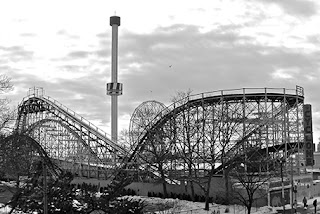The structure of your presentation sets the flow of the story. There is no one fits all structure though. I am discussing three different types of structure here, the names are invented by me and do not refer to well established definitions.
Analytical structure. A rigorous and organized framework that cuts up the material in all the components required to solve a problem or run an analysis. Management consultants use issue trees, university text books have section headings going down three levels. It makes sure you covered everything, that there are no overlaps, and that it is very easy to find a piece of information without having to read through the entire text. Despite that this structure is too boring, and too exhaustive for a presentation, it is often used.
Logical structure. The sequence of facts that provides a rock solid proof of your point, every aspect is dealt with, the logical deductions and implications cannot be disputed. Not as exhaustive as the analytical structure, it still usually uses some sort of agenda or summary page that prepares people for the logical drill that is about to follow. Market is big, competitors s**ck, etc. Better, but lacking emotion.
Implicit structure. My preferred one for a presentation. You tell a story, the audience is captivated without a rigorous agenda page, your listeners are not aware of an underlying structure of the story. It's there, it's just hidden.
I use the analytical structure to solve the problem, the logical structure to develop the check list of points I need to cover, and then construct my story free of these rigorous frameworks. When I am done, I go back to the first two to see whether I covered everything.
The audience should enter a ride in a theme park, not completely clear about the exact path you are going to take them through.
Image from Coney Island by Julia Manzerova.
Analytical structure. A rigorous and organized framework that cuts up the material in all the components required to solve a problem or run an analysis. Management consultants use issue trees, university text books have section headings going down three levels. It makes sure you covered everything, that there are no overlaps, and that it is very easy to find a piece of information without having to read through the entire text. Despite that this structure is too boring, and too exhaustive for a presentation, it is often used.
Logical structure. The sequence of facts that provides a rock solid proof of your point, every aspect is dealt with, the logical deductions and implications cannot be disputed. Not as exhaustive as the analytical structure, it still usually uses some sort of agenda or summary page that prepares people for the logical drill that is about to follow. Market is big, competitors s**ck, etc. Better, but lacking emotion.
Implicit structure. My preferred one for a presentation. You tell a story, the audience is captivated without a rigorous agenda page, your listeners are not aware of an underlying structure of the story. It's there, it's just hidden.
I use the analytical structure to solve the problem, the logical structure to develop the check list of points I need to cover, and then construct my story free of these rigorous frameworks. When I am done, I go back to the first two to see whether I covered everything.
The audience should enter a ride in a theme park, not completely clear about the exact path you are going to take them through.
Image from Coney Island by Julia Manzerova.
SlideMagic: a platform for magical presentations. Free student plan available.

